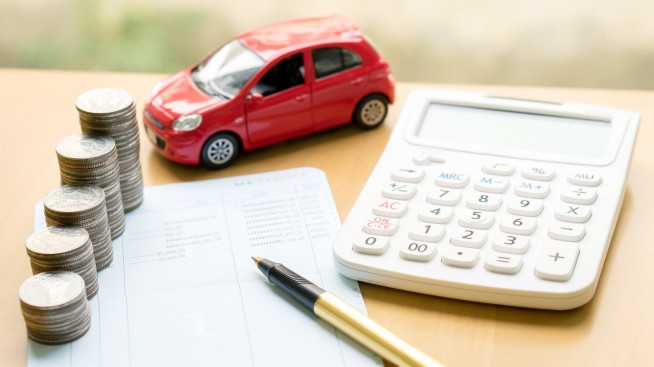Understanding down payments on a car

Purchasing a car often involves making several important decisions. You may need to decide which lender to use, the amount you need to borrow, the cost of ownership, and whether you’re prepared to make that financial commitment. Among these many decisions lies the question of making a down payment.
Is it worth putting a down payment on a car? The answer is usually yes. This is because it could often provide specific benefits to a borrower. For example, a higher down payment can help you secure a lower interest rate and better loan terms. In the long run, you can enjoy a more affordable cost of borrowing.
Another thing to remember is that cars depreciate like most other assets. A new car could depreciate by as much as 20% during the first year, so you might want to consider making a larger down payment to help you have more equity in your car than you would with a low or no down payment.
So, the case for making a down payment on a car is certainly compelling. However, there are several factors to consider before deciding on the amount you pay.
How much of a down payment should you make?
How much down payment for a car loan should you target? Experts recommend an upfront payment of around 20% on average, especially when you’re looking to finance a new car. This is usually because new vehicles tend to depreciate in value by a similar percentage during the first year. The financing structure could also specify the minimum down payment requirement, but this might vary among different lenders. This down payment percentage could be less when purchasing a used car, but in general, you should aim for a value of at least 10%.
Now, when you have a low credit score, a higher down payment could help increase your chances of getting a loan approved. It would also make perfect sense if your aim is to minimize your overall borrowing cost. A higher upfront payment could help reduce the lender’s risk exposure and enable you to negotiate a better interest rate for your auto loan.
However, it may also depend on your ability to afford a down payment. If you’re not cash strapped, then by all means you can choose a larger upfront payment. This could help reduce your total borrowing. But if you’re on a tight budget, then you can consider making a smaller down payment and opt for a longer repayment period. While this may increase the overall cost of borrowing, it could allow you to spread the expenses into more affordable monthly repayment amounts.
Keep in mind that a down payment does not always need to be in cash. It could also be in the form of the trade-in value of your existing vehicle. Alternatively, you can opt for a combination of the two methods. This could offer greater flexibility to increase the down payment you can afford.
Are low down payment car programs worth it?
If you’ve been shopping around for affordable vehicles on the market, then you may have heard of programs such as $500 down payment cars. It may sound tempting to you, but it’s worth understanding the risks that that these types of programs sometimes carry.
Some lenders and dealerships provide special deals such as $500 down payments to entice car buyers on a limited budget. For those struggling to obtain a loan without committing to a hefty down payment, this could sound like an appealing option.
However, keep in mind that these lenders could also have assessment criteria to determine the risk of lending to you, or may have practices that could be considered harmful for consumers. For example, they may expect a higher credit score or impose very high interest rates.
Driving a car, in a lot of cases, is a necessity that can be used to justify taking economical risk, but it is always advisable to work with reputable lenders and dealerships. Additionally, beyond your capability to provide down payment, it's important to think about the long term consequences that this loan may have on your financial stability. More than often saving a bit more upfront to afford a higher down payment really pays off.
Pros and cons of low down payment cars
Pros
- These lending facilities can make purchasing a vehicle more accessible and affordable for those unable to make a higher down payment on a car.
- Borrowers can usually pay the down payment with cash or using the trade-in value of their old vehicle.
Cons
- Low down payment offers are often limited to cars with low price tags and might not be available for vehicles of a higher value.
- They usually come with above-average interest rates to compensate for the higher risks of lending.
- They can often have higher monthly repayment amounts and overall costs of borrowing.
- The lower the down payment, the higher the potential negative equity on your car.
Needless to say, finding the right auto loan with an affordable down payment plan could take some effort. Weighing up the benefits and drawbacks with a sound knowledge of the financial implications could help you avoid costly mistakes.
While the option of low down payment cars is certainly available if you’re working with a limited budget, making a larger down payment could be advantageous in the long term. And remember, this can be a reachable goal with some thoughtful pre-planning. You can start by preparing a budget and cutting down unnecessary expenses. Chase checking and savings customers can use Autosave to help set aside funds at regular intervals and save effectively to meet their budgetary goals.
You should also work towards building your credit score by minimizing debt obligations, settling credit cards, and making bill payments on time. For now, you might also need to manage your expectations and be realistic about the type of vehicle you can afford. In the long term, all these could help secure your financial health so you can become the proud owner of your dream car.
To find out more, go to Chase Auto today.



